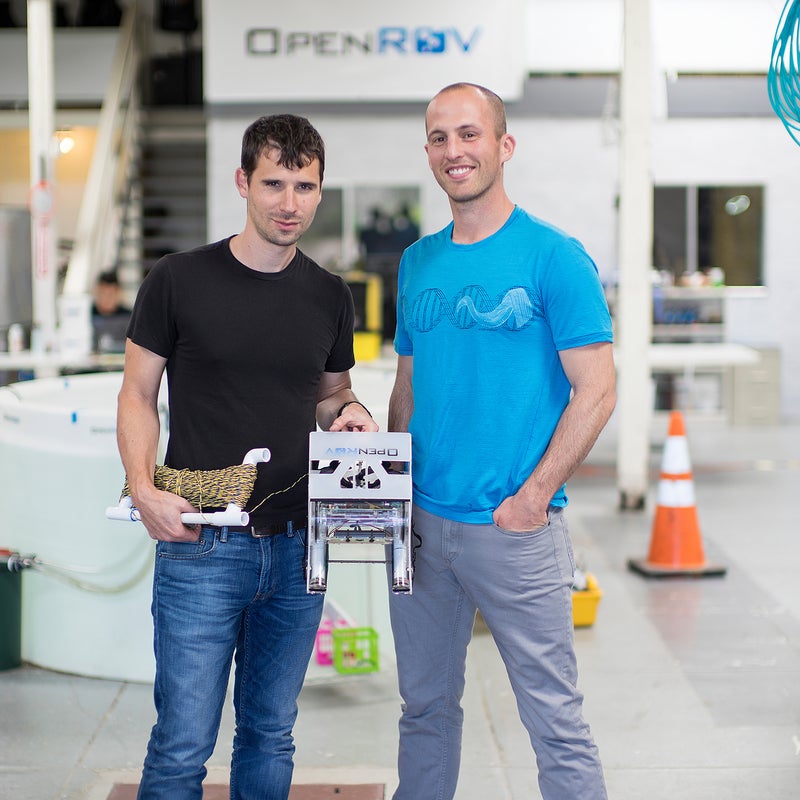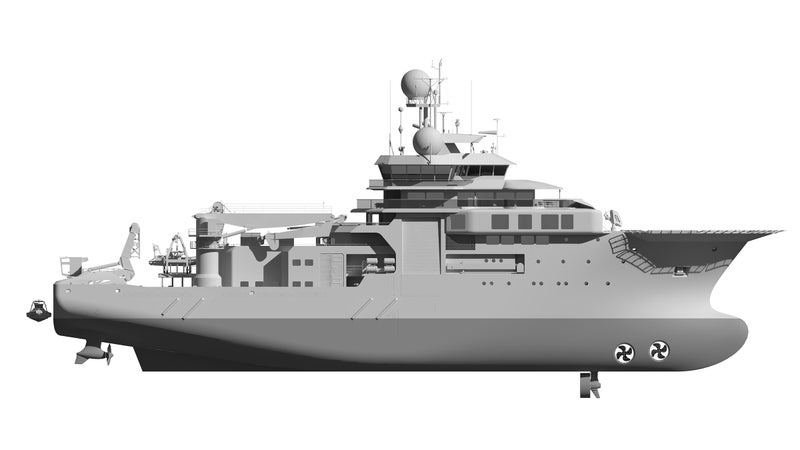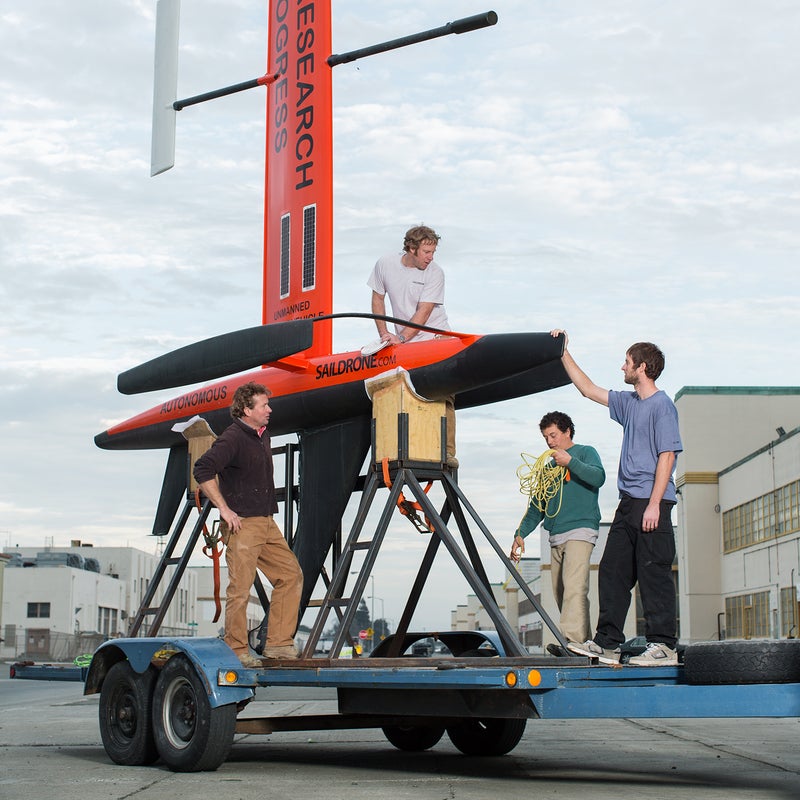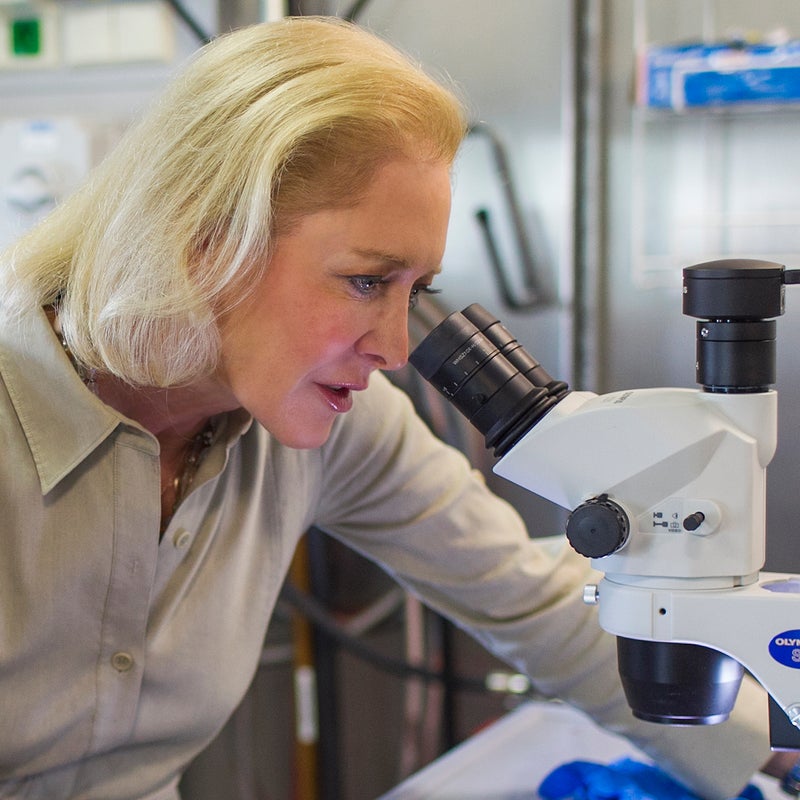How Cheap Robots Are Transforming Ocean Exploration
Backed by billionaire philanthropists and Silicon Valley venture capitalists, a wave of entrepreneurs are developing high-tech, low-cost technologies to probe the watery realms we still barely understand. Are the oceans finally getting their moon-shot moment?
New perk: Easily find new routes and hidden gems, upcoming running events, and more near you. Your weekly Local Running Newsletter has everything you need to lace up! .
The robot was born out of a treasure hunt.
It all started in 2010, when Eric Stackpole was a promising young engineer designing satellite technology as an intern at NASA’s Ames Research Center in Mountain View, California. He was simultaneously working toward a master’s degree at nearby Santa Clara University and was prone to procrastinating. Lately, he’d become taken with the idea of building his own underwater robot.
Some of the engineers at Santa Clara were already developing autonomous submersibles, and Stackpole had noticed that they “seemed to be having all the fun.” Instead of spending years planning for a mission, they’d design, build, and deploy a sub within months. “I was like, man, I want one of those,” he says. “You don’t have to have a rocket, just some curiosity and a shoreline.”
He needed a purpose to guide his design, so he asked friends for suggestions. A childhood buddy responded with a link to describing a Gold Rush–era heist that ended with a pile of gold stashed in an underwater cave in Northern California’s Coastal Range. “Down the rabbit hole I went,” says Stackpole. “I started reading more and more about it and basically became obsessed.”
Soon after, he met David Lang, an idealist in his mid-twenties who was working for a startup that did crowdfunding for new companies. Lang had sought out Stackpole after hearing about a guy who was, he says, “building a submarine in his garage.” When he discovered that Stackpole was constructing a small remotely operated vehicle, or ROV, Lang says, “I thought that was even cooler.” The two men bonded over their passions for exploration and technology, imagining the many ways the sub might be used. “They don’t have a term for love at first sight in business,” says Lang, “but that’s what it was.”
Stackpole and Lang , but it still gets them animated. On a sunny spring day in San Francisco, they’re seated on a couch in the glass-enclosed meeting space of , a newly minted startup created by merging their brand, OpenROV, and Spoondrift, a three-year-old company that makes solar-powered buoys that can transmit data from anywhere in the ocean. With $7 million in new venture funding, Sofar is one of a growing number of companies developing technologies that make it vastly cheaper and easier to track ocean conditions and observe marine life, spurring an incipient revolution in ocean science and exploration.
Lang, 34, has intense brown eyes that light up when he talks about big ideas. The hunt for gold, he explains, was a MacGuffin—the filmmaking term for a goal that gets the narrative going but ultimately doesn’t matter. “You hear of lost treasure and that’s the beginning of your epic adventure,” he says. “By the end, you forget it existed.”
Soon after the guys met, Lang was laid off and decided to go all-in on the robot. He and Stackpole sited their project in Stackpole’s garage in Cupertino, and in the spirit of open-source development, they launched a website, , to solicit feedback. They heard from amateur hobbyists, graduate students, and professional engineers all over the world.
Initially, the goal wasn’t to create a company so much as a revolutionary tool. “From the first conversation, it was: ‘What if there were 10,000 of these around the world on the front lines of exploration?’ ” says Lang. “We kind of worked backward from that dream.”
Though unmanned submarines have powered monumental finds—deep-sea hydrothermal vents in the 1970s, —they can cost millions to build and tens of thousands per day to operate, since they require the support of large ships. Simpler models with lesser capabilities have been around for a couple of decades, but even those run $50,000 and up. Stackpole and Lang had something different in mind: an everyman’s ROV. The size of a toaster and operated by laptop, it would be an aquatic version of the aerial drones that wannabe action-sports filmmakers get for Christmas. Like almost all ROVs, it would be tethered to a surface controller, but operators could send it a few hundred feet below the waves. It would sell for around $1,000.

In early 2012, they worked their way into a meeting with the Marine Science and Technology Foundation, a nonprofit funded by Eric Schmidt, then the executive chairman of Google, and his wife, Wendy. The Schmidts were offering grants for projects that advanced oceanographic research. Stackpole and Lang showed up with a barely functioning prototype and a speech about the world-changing potential of a budget ROV. (They neglected to mention the gold.)
“They said, ‘OK, what do you need?’ ” says Lang. “At that point, we were strapped for cash and thinking only about the very next steps. So we asked for a few thousand dollars to buy parts to build 15 more prototypes.”
The foundation was flummoxed. The ask was so low—most of their grants were in the hundreds of thousands—that a typical proposal review process didn’t make sense. In the end, Lang and Stackpole walked away with just over $7,000, promising to submit their receipts.
Marine scientists have often complained that we care more about understanding the emptiness of space than the living seas that make up 70 percent of our planet.
“Why are we ignoring the oceans?” Bob Ballard, the celebrated deep-sea explorer, groused at the start of his on the future of underwater research. He claimed that NASA’s annual budget to investigate the heavens would fund the National Oceanic and Atmospheric Administration’s sea exploration for the next 1,600 years. Others have pointed out that we have better maps of the surfaces of Mars and Venus than the seafloor. , 80 percent of the ocean realm remains unexplored.
Making matters worse, government support for exploratory science isn’t what it used to be. Coming out of World War II, that the quest for knowledge was essential to progress. Following the creation of the National Science Foundation in 1950, government funding dominated R&D across numerous disciplines. These days, not so much. found that in 2015, federal dollars accounted for less than half of the funding for so-called basic research—projects that don’t have immediate commercial applications. By contrast, that level was above 70 percent in the 1970s and 61 percent as recently as 2003.
These days, new hope for ocean exploration often comes via the largesse of billionaire philanthropists, who’ve poured money into a range of projects. Marine research has long had its patrons—David Packard established the now iconic Monterey Bay Aquarium Research Institute in 1987—and in recent years there has been a stampede of benefactors looking to the sea.
Making the biggest splash, at least in the press, is hedge-fund magnate Ray Dalio, who in a last year declared a desire “to revive the Jacques Cousteau moment” with a high-profile media initiative called , which involves converting a 280-foot former oil-industry survey vessel into a fully equipped research ship for a National Geographic Television series produced by James Cameron. Dalio has been loaning out his 184-foot yacht, , to the Woods Hole Oceanographic Institution since 2012, but , OceanXplorer, is as much a filmmaker’s dream machine as it is a scientific marvel, with a submarine hangar that seems straight out of the Avatar production book, video-editing stations capable of working with 8K raw footage, and cameras pretty much everywhere. The big idea is to chronicle expeditions guided by researchers and explorers in a reality-format show that captures both natural wonders and human struggles. Last October, a $185 million joint effort to “capitalize on OceanX’s powerful imagery” as a way to advocate for marine protection and conservation.

The Schmidts also have a snazzy research ship, , which has been almost continuously at sea since 2013 and offers free passage to scientists using new technologies and research methods. On board, they have access to a first-rate sonar system for seafloor mapping, a fleet of submersibles, and an advanced computing system that enables virtual-reality data visualization (think plankton in 3-D), plus teak outdoor furniture and a luxurious sauna.
More important, the Schmidts have pioneered a Silicon Valley approach to ocean exploration by funding the development of disruptive technologies. Around the time that the Marine Science and Technology Foundation met with Stackpole and Lang, it had funded an adventurous British engineer named Richard Jenkins. Jenkins had set a new wind-powered land-speed record with a contraption he’d built a few years earlier, and he applied what he’d learned . The 23-foot autonomous vessel can navigate the open ocean for a year at a time, collecting data and streaming it back to shore via satellite, with power provided by solar panels. It potentially enables a multitude of research and monitoring activities—measuring ocean acidification, tracking tagged fish, detecting oil spills—at a fraction of the cost of a manned expedition. No big ship or crew required: just set some drones on their way and have a seat in front of your computer.
For researchers, affordable tech opens up new worlds. “Your decision process is fundamentally different when you can use cheaper tools,” says Jim Bellingham, director of the at Woods Hole. For decades ocean scientists have structured their work around the limited time they could afford to book aboard vessels, subs, and other million-dollar equipment. With data suddenly much easier to obtain, says Bellingham, a growing number of researchers have found that their dream projects can happen much faster.
David Lang is looking a bit green. It’s just before noon, and for the past couple of hours we’ve been in a small boat, bobbing in the waves of Monterey Bay. Also on board are the hired captain, a Sofar marketing staffer, and a cameraman filming , the geeky web series hosted by MythBusters veteran Adam Savage. Floating next to us in an inflatable boat are Stackpole, Sofar CEO Tim Janssen, and a second cameraman controlling a DJI Phantom drone. A low ceiling of fog has delayed what we’re all waiting for: a plane that will make a series of low passes overhead, each time shoving one of Sofar’s smart buoys out a cargo door.
The buoys, called , look like bright yellow plastic basketballs, each topped with a sun hat of solar panels. Outfitted with sensors to measure wind and waves, they can transmit data via satellite from almost anywhere on the water. Sofar sells them for $4,900 apiece, or about 10 to 50 times less than the price of the large surface buoys commonly used by NOAA. The Spotters don’t collect data at the same precision or frequency as those traditional tools, but because they’re so cheap and small, they can be deployed in locations where standard buoys aren’t viable because of expense or logistics. In February 2018, dropped five Spotters off a ship into the Southern Ocean, which circles Antarctica and is the birthplace of massive storms that can affect coastlines thousands of miles away. The Spotters were the first free-floating buoys to continuously measure wind and waves in the frigid waters, and their endurance suggested the possibility of vastly improved weather tracking in the region. In the course of a year, they drifted more than 4,000 miles and transmitted readings from the notoriously violent Drake Passage.
In addition to improving forecasts, autonomous monitoring tools have the potential to inform scientific studies of climate change; a Saildrone recently lapped Antarctica to collect first-of-its-kind data on carbon levels. In the shipping industry, detailed real-time information about ocean conditions can help tankers alter their routes, saving enormous amounts of fuel.
Then there are the recreational uses. Surfers and anglers get their marine forecasts from applications that rely on government buoys, which are typically stationed near shipping lanes and airports. If your favorite break or fishing hole is miles away, the predictions aren’t trustworthy. Which is why, last year, big-wave surfer a Spotter near Mavericks, the monster break south of San Francisco. Suddenly, he was able to get local data delivered to his phone, letting him know the size and frequency of swells. In many places—remote atolls, rocky coastlines—getting buoys into the field is a major challenge, and today the Sofar team is hoping to demonstrate that Spotters can tolerate one of the simplest deployment techniques: dropping them from a plane. The team’s goal is to test different sizes of parachutes to see what it takes to slow the buoy’s descent enough to avoid damaging it. There’s also an alternate system that has Stackpole excited: a cardboard box. If Spotters are going to be sent to customers all over the world, he figures, why not mail them in boxes that double as landing systems?
Initially, the goal wasn’t to create a company so much as a revolutionary tool. “From the first conversation, it was: ‘What if there were 10,000 of these around the world on the front lines of exploration?’ ” says Lang.
Before loading five Spotters into a chartered plane at a nearby airport, Stackpole explained how, if you opened the specially designed top flaps of a box before pushing it out the cargo door, the aerodynamics would cause the flaps to extend outward like wings, making the box spin and creating enough drag to slow its fall. Once in the water, the box would break apart, with minimal impact on the marine environment. “There’s all sorts of ways it could go wrong,” he admitted with a smile. “The box could end up tumbling and the Spotter could fall out. We’ll just have to figure it out!”
But first the fog has to lift. On the water, the team fills the time with a test flight of the Phantom drone and some fretting about a nearby sailboat. (“They’re going to think this is a drug drop,” Lang says.) Janssen motors the inflatable craft alongside our boat, and Stackpole offers everyone snacks: a loaf of pepper bread, hummus, and Frosted Mini-Wheats. Lang winces.
The seasickness he’s feeling is just one of the challenges the guys have had to overcome. After getting their funding from the Schmidt foundation in 2012, Stackpole and Lang developed a working ROV and in that cave in the Coastal Range. They didn’t find any gold—the robot’s camera picked up only debris—but the effort earned them a different kind of treasure. The community created through OpenROV.com helped them raise $111,000 in a Kickstarter campaign that promised backers a DIY underwater-robot kit. A year later, OpenROV secured $1.3 million in a funding round led by True Ventures, a San Francisco firm that was an early investor in Fitbit. That propelled the design of their first ready-for-market drone, which they announced, in another Kickstarter campaign, in 2015.
, it was roughly the size of a cereal box and looked like it could have been designed by Apple, with a sleek, white, hard-plastic body, jet-black rubber side panels, and a single camera eye front and center. It was capable of withstanding freezing temperatures and dives of up to 330 feet—three times as deep as a typical scuba diver—and could light up a shipwreck (or giant clam) with an array of six LED lights. Twin props enabled a maximum speed of six and a half feet per second. The Trident was a hit, garnering more than $815,000 in pledges.
Back on the water in Monterey, the fog dissipates suddenly and the plane makes its first bombing run, sending a buoy attached to a small black and red parachute hurtling toward the Pacific. It smacks the water hard, and the crew races over to pick it up. A second drop with a bigger chute seems about perfect, the Spotter touching down with a gentle plop. On the last run the plane sends a box out the window, and just as Stackpole predicted, the top flaps open and it starts to spin, slowing just a bit before thumping into the waves. If it had been dropped from higher up, Lang suggests, it would have worked even better.
Sofar would later decide against using the boxes, but for the moment the team is elated. On the bumpy ride back to shore, Stackpole gives Janssen a high five and says, “We got this!”
On a scorching summer day in Los Angeles, I meet Wendy Schmidt for lunch at a Mediterranean restaurant on Melrose Place. She’s the force behind (SMTP), which in large part was inspired by the experiences of Saildrone and OpenROV. Formed in 2016, the nonprofit’s mission is to support the development of technologies that address ocean-conservation challenges and are also likely to become profitable. The idea being that you can have the biggest impact by supporting projects that eventually take care of themselves.
“We had this realization that there were lots of people out there with ideas that could change the way we think about solving problems,” she says. Between bites of roasted cauliflower and sea bass, Schmidt tells me about a key moment in the evolution of their thinking. In 2014, she was at the headquarters of the Monterey Bay Aquarium Research Institute to oversee testing for that would award $2 million to scientific teams that developed sensors to measure ocean chemistry. While there, she met a scientist who showed her a device he’d created to remove oil from the water after the 2010 Deepwater Horizon disaster. (The Schmidts had funded an earlier XPrize competition for exactly such a tool, but this scientist hadn’t registered.) He’d brought it down to the Gulf after the spill, he told her, but never got it in the water. Ever since he returned, it had been in storage.
“He’s a scientist, not a businessperson,” she says. “He doesn’t understand the marketing. He doesn’t know who might make use of what he has.” Such a device might be sold to oil companies that are on the hook to mop up spills. This, she explains, is where philanthropy can make the biggest difference: giving innovative ideas a boost so they have a chance.

SMTP’s model is to fund projects for several years, at amounts ranging from $50,000 to $500,000 annually, getting them through the so-called valley of death period between a company’s initial funding and the steady flow of commercial revenue. Recent grantees include a startup that developed a sensor that enables coastal communities to predict dangerous high tides missed by existing government monitors; a handheld DNA scanner that can identify species of fish and other wildlife, thus reducing seafood fraud; and an ROV developed by the inventor of the Roomba that electrocutes and then vacuums up invasive lionfish.
Others are following the Schmidts’ lead. Last January, at the World Economic Forum in Davos, Switzerland, Salesforce founder a $1.5 million donation to the Sustainable Oceans Alliance, which has formed an accelerator to nurture startups developing technologies that improve ocean health. The founders of those startups get $25,000, attend an eight-week leadership program in San Francisco, and are invited on a small-ship cruise in Southeast Alaska. (In return, SOA takes an equity stake in their companies.) A new philanthropic endeavor, , run by a former project lead at X Development, Google’s so-called moon-shot factory, says it will be funding “radical solutions” to ocean problems.
Like Lang and Stackpole, many of the innovators in the ocean-tech sector don’t have a marine background, which can cause them to get ahead of themselves. , founded in San Francisco in 2014 and funded in part by SMTP, started out producing a solar-powered tracking device for the small fishing boats that are used all over the developing world. About the size of a large smartphone, the trackers use cellular towers to automatically log and share location data. The system allows authorities to better manage fisheries and combat illegal activities, while fishing boats can certify that their catch was taken outside protected zones. During a presentation at a networking event in San Francisco, founder Dave Solomon described how, when the company sent its first run of prototypes to Indonesia, the fishermen wanted to see what was inside the units, so they popped them open, destroying their waterproofing. “We were just a bunch of tech nerds in the Bay Area,” he said. “We had no idea.”
Move fast and break things has, of course, been a defining ethos in Silicon Valley, but it’s an approach that can make traditional researchers uncomfortable. A marine biologist who works with a major conservation organization told me that the billionaires backing the new technologies are too easily captivated by “the next cool thing they hear about at a dinner party.”
Still, for veteran marine scientists, it’s an era of extraordinary opportunity. Woods Hole’s Jim Bellingham recalls launching his own startup, Bluefin Robotics, to manufacture underwater autonomous vehicles in the late 1990s, a time, he says, “when no VCs or angel investors wanted to be in the marine space.” He put his own savings into the company and hit up family and friends. “It was really tough.”
The plane makes its first bombing run, sending a buoy attached to a small black and red parachute hurtling toward the Pacific.
A month after my lunch with Schmidt, I visit Bellingham at his office on Cape Cod. An adviser to both the Schmidts and OceanX, he sees extraordinary possibilities in the merger of tech entrepreneurs and the scientists who really understand the ocean. At Woods Hole, he oversees a project designed to do just that: , a rapid-prototyping facility opened in 2017. Bellingham leads me into the multiroom space, which has a geeky Star Trek vibe and is loaded with laser cutters, high-resolution 3-D printers, and a virtual-reality system.
The vision is to enable researchers and the many marine-technology companies clustered around Woods Hole to collaborate on new designs for everything from tiny sensors to autonomous robots. “Things that used to take months, now you can do in a day,” Bellingham says
Walking around, we pass by a whiteboard scribbled with engineering diagrams and equations. In the top left corner, someone has written a new and improved motto for innovation: TEST FAST + LEARN CHEAPLY.
A week after the Spotter test, Lang flew to Washington, D.C., to appear before the House Subcommittee on Environment, which was holding a hearing called . Once again he told the story of building a robot to search for gold and how that led to a company launch. The real breakthrough, he said, was the development process: open-source design and crowdfunding weren’t tactics that scientists had considered.
Since Lang and Stackpole began shipping Tridents to Kickstarter backers last fall—two years later than promised, due to manufacturing delays—they have sold thousands of units, now priced at $1,695. supported the purchase of 1,000 of them, for donation to researchers, conservation groups, teachers, and citizen scientists. Among the beneficiaries was a biologist at the University of California at Santa Barbara in Yosemite National Park, where the endangered amphibians spend their winters in alpine lakes capped by thick layers of ice and snow. (Scuba-diving under the ice to make observations would be an enormous endeavor, but deploying a Trident is relatively easy.) Paying customers that bought two drones for special search and rescue operations, like when a car goes underwater.

Ultimately, Lang says, “the size of the business opportunity for us remains to be seen,” though that isn’t preventing Sofar from thinking big. The company’s most ambitious concept released so far is a global network of Spotters to monitor the waters around coral reefs, which are dying off at a rapid rate as oceans heat up. Scientists studying the effects of climate change on corals generally rely on estimates of sea surface temperatures provided by satellites, which miss important fluctuations over short distances and brief periods of time, and by sensors that must be attached to reefs by divers and later collected for data retrieval. By adding temperature gauges to hundreds of Spotters and mooring them around major reef systems, researchers could monitor localized conditions in real time and gain knowledge about how tides, winds, and other factors might affect coral survival rates. To observe corals, teams could use Tridents, which aren’t subject to the same safety limitations as scuba divers.
This summer, Sofar was actively pitching the project to funders, citing the opportunity to have an enormous impact on coral-reef science for just a few million dollars. Central to the proposal was the idea that much of the work could be carried out by citizen scientists, who wouldn’t need any specialized training, since Spotters and Tridents are easy to use. In addition to reducing costs and speeding up deployment, Lang believes, the most important benefit would be growing the community that’s actively invested in the health of reefs. “When people participate in the process, they care,” he says. “The scientific method becomes the message.”
It would be just like what he and Stackpole dreamed of back in their early days of tinkering in the garage: thousands of their robots on the front lines of exploration.
Executive editor Michael Roberts is the showrunner of the ���ϳԹ��� Podcast.


